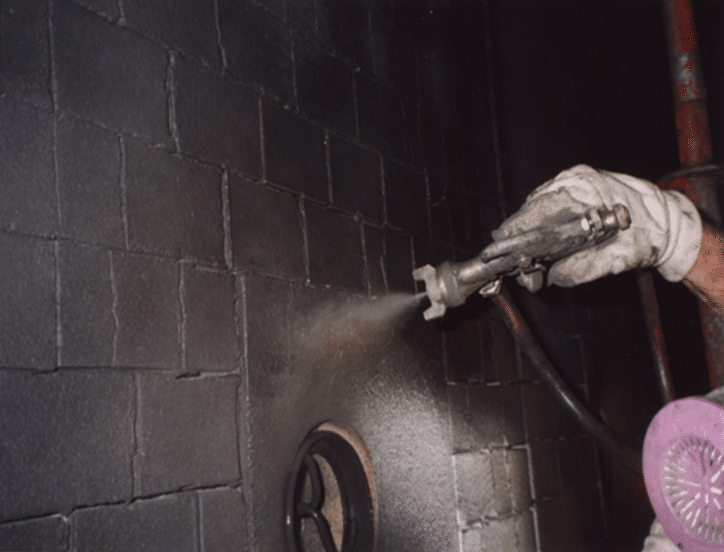Catalytic reforming unit (CRU) converts low-octane, straight-run naphtha fractions, particularly heavy naphtha into a high-octane, low-sulfur reformate, which is a major blending product for gasoline/petrol.
The process is endothermic and is carried out by feeding a naphtha and hydrogen mixture to a furnace, where it is heated in a series of fired heaters to the desired temperature, 450° to 520°C (840° to 965°F), before passing through a series of reactors. Catalytic Reformer tube coating helps to maximize process efficiency.

In a high temperature environment, steel alloy process tubes will oxidize and scale will develop. This oxidation scale layer acts as an insulator and will lead to a decrease in heat transfer as the scale increases in thickness. To compensate for the insulating effect of the scale, the heater is subjected to excessive fuel firing.
The resulting increased temperate promotes the development of further scale. As oxidation continues, tube metal is consumed leading to a decrease in tube wall thickness, which shortens the tube life.
Cetek thin film coatings for process tubes prevent oxidation and scale formation for approximately two turnarounds.
This thin-film coating maintains the process tube in a like-new condition, maximizing conductive heat transfer to the process and increasing radiant section efficiency. Likewise, by stopping oxidation, tube metal loss is prevented.
The Emissivity of typical refractory linings in fired heaters ranges from 0.45-0.65. When radiant energy encounters these refractory linings, much of the energy is reflected back and is absorbed into the flue gas and carried out of the radiant section, into the convection section and out the stack, with the majority never reaching the process.
High emissivity coatings for refractory surfaces increase surface emissivity to 0.92, a near black body. Radiant energy is absorbed by the high emissivity lining and reradiated across a broad spectrum. The reradiated energy is able to penetrate the flue gas and be absorbed by the process, increasing radiant section efficiency. This coating, standalone or complementary to the reformer tube coating, can further increase radiant efficiency.

A refinery reported that excessive process tube scale on their catalytic reformer was creating a limitation and contacted IGS, the pre-eminent global turnkey provider of high-emissivity coatings, for an inspection and recommendation.
IGS visited the site to conduct an infrared inspection of the heaters. After reviewing the infrared images and the data supplied by the refinery’s process engineer, our fired heater expert recommended both high emissivity coatings for process tubes and refractory surfaces for all heater cells. The results of this evaluation are summarized in the table to the right.
With the predicted fuel savings and capacity increase from the application of high emissivity CRU tube and refractory coatings, a payback period and return on investment was calculated over the life of the coating.
Keeping the same production rate, the coating would produce over $2.9M in fuel savings; when keeping the same firing rate and increasing throughput, over $10.5M in additional profit could be realized from the increase in production.
After the catalytic reformer was returned to service and conditions in the heaters were similar to the pre-evaluation conditions, a fired heater study was completed to measure the actual benefits of the ceramic coatings. The actual increase radiant efficiency of 10% was achieved.
Taking the cost of the project and the benefits into consideration, the payback was less than a year.
Radiant section efficiency benefit
CO₂ emission reduction benefit
NOₓ reduction benefit
Related Case Studies:
Related Questions:
Other Cetek Services:
CATEGORIES: